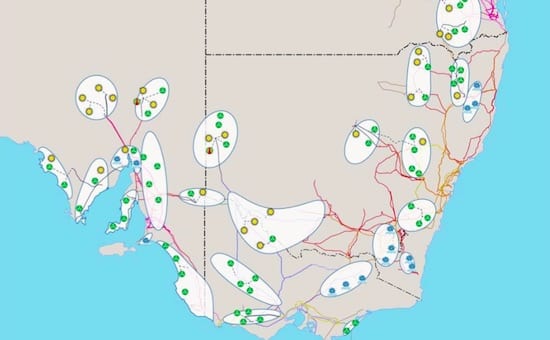The renewable energy target – in the estimations of the Clean Energy Regulator, the federal government and independent analysts – may already be effectively met, but the number of wind and solar project proposals shows no sign of abating.
Spark Infrastructure, the company that owns a minority share of transmission company Transgrid, as well as larger shares of distribution networks in Victoria and South Australia, says there is a massive opportunity in wind and solar in coming decades.
Rick Francis, Spark’s CEO, said on Monday at a briefing for the company’s full year results that Transgrid alone had received 7 new inquires about new large scale wind and solar projects for New South Wales already in 2018.
This added to the 120 project enquiries received in 2017, of which more than 30 had firmed up and sought connection agreements. “The project pipeline continues to look strong,” Francis said.
Transgrid, which has said in the past it sees no technology hurdle to stop a shift to 100 per cent renewables, expects to connect tens of gigawatts of large scale solar and wind in the coming decades.
In NSW alone, some 10,000MW of new capacity will be needed to replace retiring coal generators, while it notes the Australian Energy Market Operator, in its System Integration Plan, canvasses the potential of 30GW (30,000MW) of new wind and solar capacity over the next 20 years out to 2037.
Francis said there were clear opportunities in building new network infrastructure to ensure that solar and wind capacity could be connected, and shared between state grids.
It has numerous proposals for new network infrastructure, including renewable energy zones in NSW, new connections to South Australia, and boosting poles and wires to accommodate the proposed Snowy 2.0 pumped hydro scheme. That project alone could cost $1.3 billion.
Francis also spoke of the opportunities in creating virtual power plants, using batteries to avoid or defer network upgrades, and also the creation of “community micrograms”, where battery storage and solar become standard for new residential sub-divisions.
He also spoke of the potential to use demand response at a much greater level to help meet peak demand and also providing network services,












